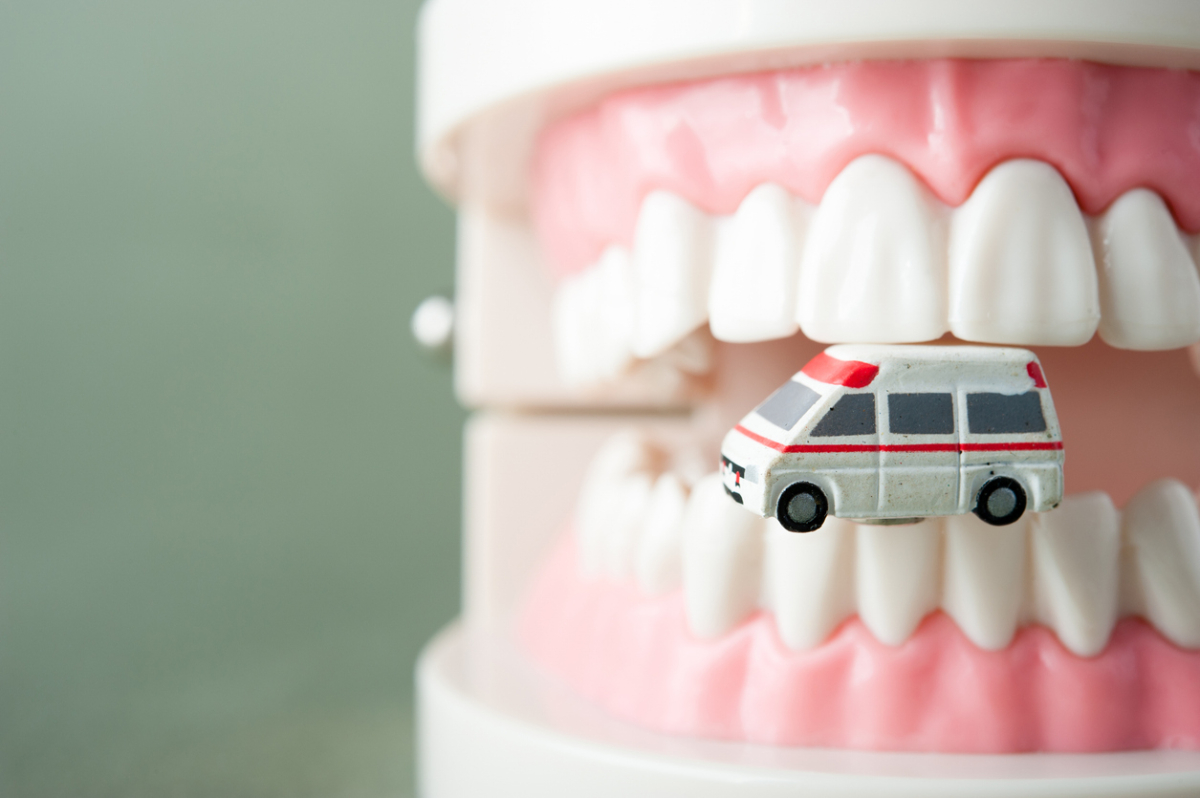If you experience a toothache or sustain oral trauma, you may wonder whether to visit an emergency dentist or schedule an appointment with your regular dentist. In this article, we address the question: What is considered a dental emergency?
What Is Considered a Dental Emergency?
A dental emergency is any oral health issue that requires immediate medical attention. Such issues can be characterized by bleeding or acute pain. Let us discuss the most common dental issues that warrant a visit to an emergency dentist in more detail.
Acute Tooth Infection
The following symptoms can signify a tooth infection that needs immediate attention:
- Severe pain. This pain can be sudden or intensify over time when tooth decay reaches the inner pulp of the tooth or its roots.
- Red and swollen gums around the infected tooth, or swelling in the jaw and face.
- Pus oozing from the space between the gum and the infected tooth.
- Persistent bad breath and unpleasant taste in the mouth.
- Fever, typically in combination with the symptoms listed above
Acute tooth infection is a medical emergency because it is crucial to prevent the infection from damaging the nerves of the tooth, potentially leading to tooth loss and the spread of infection to the surrounding teeth, gums, and jawbone tissue.
Acute Gum Infection
Advanced and untreated gum disease can lead to abscesses, tooth loss, and damage to the jawbone. The following symptoms can signify this condition:
- Red or darkened and swollen gums
- Constant bleeding of the gums
- Swelling in the face and jaw
- Pus oozing from the gums
- Teeth that are unstable in their sockets
- Acute pain
- Fever
- Persistent bad breath and unpleasant taste in the mouth
Failed Dental Restoration
A dental restoration, such as a root canal, crown, bridge, or implant, can fail over time due to wear or immediately after treatment due to reinfection. Regardless of the timeframe, we recommend going to an emergency dental room immediately in the following situations:
- Acute pain or swelling in the area of your dental restoration
- A broken, loose, or lost dental restoration, especially if it causes pain, bleeding, or swelling.
Keep in mind that if, for example, your dental crown becomes loose or falls off the tooth, it is essential to see your dentist as soon as possible, even if there is no pain, as the tooth becomes vulnerable to bacterial infection.
Oral Trauma
Oral trauma can occur due to an accident, resulting in an impact on the face. The presence of the following symptoms requires immediate medical help:
- Bleeding
- Lacerations in the mouth
- Cracked or chipped teeth (especially when the pulp is exposed)
- Loose or dislodged tooth (can heal if repositioned and treated in a timely manner)
- Knocked-out tooth (if attended to within the first 30 to 6 minutes after the injury, it can be put back in the socket and heal with time, so always bring your knocked-out tooth to the emergency dental office)
In some cases, even if you do not have visible damage, a tooth’s nerves or roots can be damaged underneath the gum tissue, which can lead to tooth loss. Thus, we recommend visiting your dentist as soon as possible for a checkup and an X-ray after the trauma occurs.
Oral Abscess
An oral abscess typically looks like a pocket of pus in the mouth. It is caused by a bacterial infection (an untreated cavity and decay, gum disease, or infection due to trauma). An abscess in the mouth can cause pain, swelling, and fever, and can be dangerous or even life-threatening if left untreated.
Get Emergency Treatment at Valley Alder
If you experience any of the symptoms discussed in this article, please do not hesitate to call our office immediately to consult with an experienced emergency dentist. Remember that putting off treatment can lead to tooth loss and the spread of infection to other tissues in the mouth.


